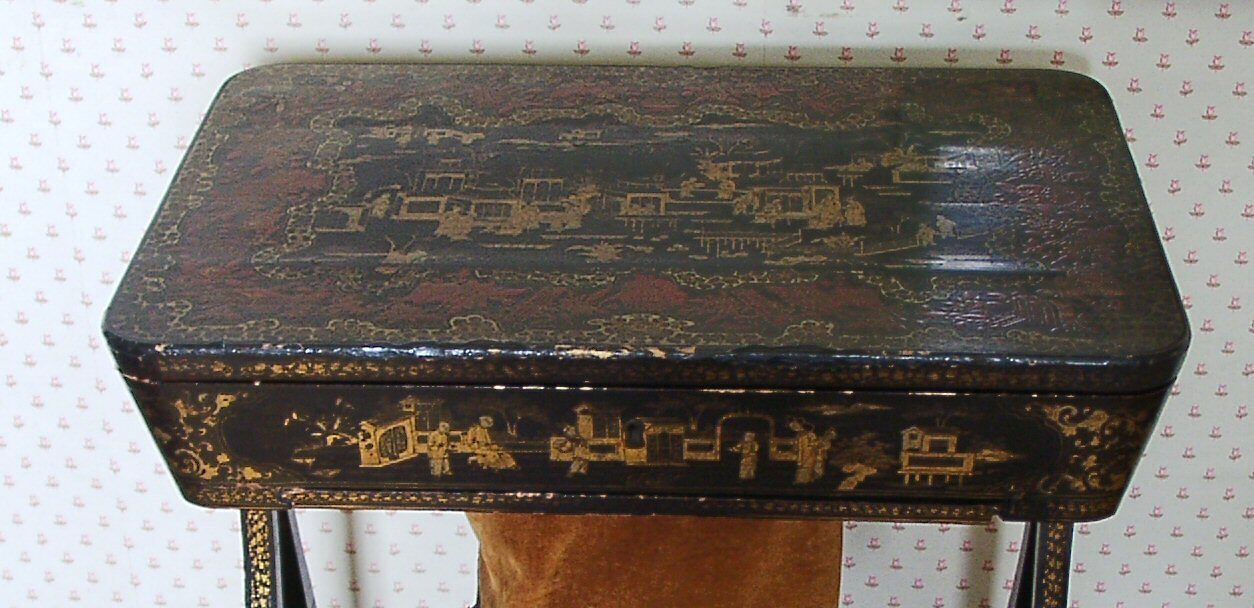Jane Austen’s worktable
Object name: Early 19th century Chinese export black lacquer worktable
Object number: CHWJA:JAH144
Category: Object
Description: Early 19th century Chinese export black lacquer worktable with a rising rounded rectangular top painted in gilt with figures and pavilions within a red heightened mark and scroll border. Pierced baluster end supports on paw feet joined by a baluster bar stretcher. Fitted interior of wells and lidded canisters above a work basket. This table is said by Austen descendants to have belonged to Jane Austen.
Made: Early 19th century
Context: By the end of the 18th century, the East India Company was exporting a wide range of goods from China to Britain including tea, silk, porcelain and lacquered items.
Lacquer is a resin made from the highly toxic sap of the Rhus verniciflua tree, a close relative of poison ivy. It can be applied to a variety of materials, including wood, to give a hard shiny finish that is resistant to insect attack and a wide range of solvents.
The resin itself could not survive the long sea journey to Europe without hardening beyond use so the Chinese quickly capitalised on European demand by making lacquered objects, including sewing boxes and tea caddies, specifically for export which were styled to suit Western tastes.
Early on when the European eye was unaccustomed to oriental design, a lot of designs were fairly classical and abstract but over the next few decades the designs became more Chinese. By the early 19th century, vignettes portraying Chinese courtly scenes – figures in in pavilioned gardens or in landscapes – became popular and these designs became more complex as time went on.
Provenance: This table was sold at Sotheby’s in 1948 as part of the sale of the Frederick Lovering collection. Lovering was an early collector of Jane Austen artefacts who bought many items, including this table, from Jane and Emma Florence Austen, granddaughters of Jane’s brother Charles. It was acquired for the museum by Mr T. Edward Carpenter, the founder of the museum at Jane Austen’s House.
Other objects you might like:


